
Hybrid UAVs: The Advent of Responsive Combat Capability

Sometime in April 2022, TechEagle, a private start-up firm involved in drone-based logistics, launched the ‘Vertiplane-X3’, claimed to be the fastest hybrid e-VTOL (vertical take-off and landing) indigenous Unmanned Aerial Vehicle (UAV). The firm claims that the Vertiplane-X3 can deliver a 3 Kg payload over a distance of 100 Km, at speeds of upto 120 Kmph, in high-altitude terrain up to 4500 m and across extreme temperatures. While these characteristics are impressive, what is really attention-catching is the fact that this hybrid UAV (H-UAV), as are others that have recently entered the global/Indian market, is capable of landing on/taking off from an extremely small piece of real estate (~5m2), while incorporating the speed and aerodynamics of a fixed-wing aircraft. These dual capabilities greatly influence military acceptability of H-UAVs in the Indian context, given the restricted terrain and far-flung, isolated deployments along most of the Line of Actual Control (LAC) with China and the Line of Control (LC) with Pakistan.
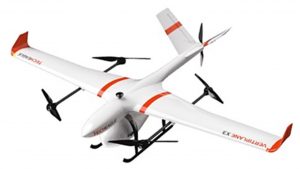
Screengrab of Vertiplane X3 H-UAV:Source-techeagle.in
How is a H-UAV Defined?
Before defining a H-UAV, it is important to first define the exclusive design variants of fixed and rotary-wing UAVs.
Fixed-wing UAVs utilise lift from air flow, generated due to the UAV’s airspeed, shape, and wing-span. These UAVs typically use a motor/co-axial propellers for propulsion/ manoeuvering. They can be hand, catapult or runway-launched and are capable of runway landing/parachute recovery. Such UAVs offer several advantages over rotary-wing UAVs, including high payload capacity, greater endurance/stability, greater aerial speed (and therefore larger combat radius) and a limited capability to guide sans power. However, such UAVs also present certain disadvantages, including the requirement of specialist training to operate due to relatively larger size/ performance ceilings, consequent lower manoeuverability, requirement of substantial real estate for take-off/landing/ recovery and importantly, incapability to hover, thereby affecting capability for persistent operations.
As opposed to simple quadcopters that have seen a surfeit in the domestic market, Rotary-wing UAVs typically mount one large main rotor (often with an anti-torque device like a tail-rotor) or multiple rotors to generate lift/for manoeuvering. These have essentially been developed in single, twin and multi-rotor variants. These UAVs are typically capable of take-off and landing under their own power. They offer the advantages of extended hover, greater manoeuverability at lower airspeeds (thus making them power-efficient), relatively easier to handle and low requirement of real estate/time for take-off/landing (thus increasing responsiveness and lending to surprise). These UAVs, however typically suffer from disadvantages of lower operational reliability, instability in flight, slower speeds as compared to fixed-wing variants, and therefore greater vulnerability and lesser payload capability.
As is apparent, hybrid fixed-wing/vertical take-off and landing (VTOL) UAVs incorporate design features of these exclusive design variants: fixed-wing category, representing the greater population of military UAV fleets (eg:- India’s Nishant/ Rustom 2/ SWiFT; Israel’s Heron; US’ Sea Guardian– all incidentally operated by the Indian Armed Forces; China’s Wing Loong II, also offered to Pakistan) and the rotary-wing category (eg:- Airbus’ VSR700; HAL’s RUAV-200; Hindustan UAV Systems CN-50, CX-80 HP and CXS-250) UAVs with an aim to merge the attributes of both designs- to enhance operational efficiency/durability and attempting to eliminate the shortcomings of both exclusive design variants.
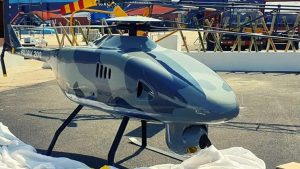
HAL’s RUAV-200:Source-theigmp.org
Hybrid fixed-wing/VTOL UAVs are therefore machines that can operate in both vertical flight for take-off/landing and horizontal flight mode once airborne. These hybrids incorporate both fixed wings and propellers/rotors in their designs. Since these UAVs incorporate the capabilities/ advantages of both design variants, H-UAVs represent a significant leap in combat UAV capability for the Armed Forces.
H-UAVs:Design Variants
While a plethora of design variations within the class of H-UAVs have been proposed/do exist, these UAVs predominantly fall into two variants- Unmanned convertiplanes (UC) and Tail-sitter (TS) UAVs.
UC UAVs. UC UAVs typically transition from vertical flight configuration for take-off to horizontal, fixed-wing flight before transitioning back to vertical landing configuration, achieving such transition by either activating/deactivating a set of rotors (for vertical/horizontal flight respectively) or by angling their proprotors (spinning aerofoils that function as both airplane-type propellers and helicopter-type rotors) for forward propulsion, while utilising their fixed wings for lift. UC UAVs fall into three sub-variants- Tilt-Rotor UC UAVs, Tilt-Wing UC UAVs and Quadplanes, with intermediate hybrid designs thereof.
- Tilt-Rotor UC UAVs have rotors mounted on fixed wings. These rotors are capable of rotating both vertically and horizontally during flight for VTOL and horizontal flight respectively.
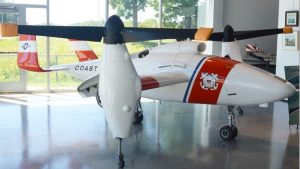
Bell TR911X Eagle-Eye Tilt-Rotor UC UAV:Source-commons.wikimedia.org
- Tilt-Wing UC UAVs have wings that mount a set/sets of rotors, wherein the entire wing can be rotated vertically or horizontally for VTOL or horizontal flight. As is evident, these designs are complex/ expensive and therefore have not seen significant proliferation, especially for military applications.
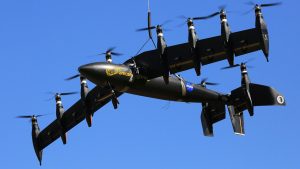
NASA’s GL-10 Greased Lightning Tilt-Wing UC UAV:Source-en.wikipedia.org
- Quadplanes are UC UAVs that have vertical propellers for VTOL along with fixed wings and horizontal propellers for horizontal flight. US’ DeltaQuad, Vertiplane X3 mentioned above and ideaForge’s Switch are examples.
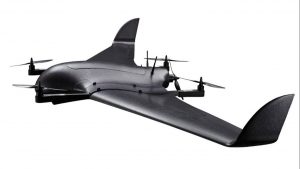
DeltaQuad Quadplane:Source-deltaquad.com
TS UAVs. TS UAVs employ tail-assisted VTOL and then rotate their entire body horizontally for level flight. These UAVs therefore employ a fixed propeller that does not swivel/activate/deactivate during flight and may therefore present simpler design options. US’ Northrop Grumman’s Tactically Exploited Reconnaissance Node (TERN), a joint development between DARPA and US Navy, and Thailand’s Vetal are examples.

Screengrab Showing TERN:Source-DARPA
Envisaged Operational Advantages of H-UAVs in the Indian Context
Employment of UAVs and therefore H-UAVs would range from combat/combat support tasks in the operational domain to Humanitarian Assistance and Disaster Relief (HADR).
The canvas of Operational employment would include ISTAR tasks along the LAC (spanning 4057 km) and along the LC (spanning approximately 776 km). The restricted/ inhospitable terrain along the LAC/LC for the most part and dense vegetation along India’s North Eastern boundary would pose challenges of availability of real estate for take-off/ landing operations. Restricted intervisibility due to intervening features and consequent requirement of persistent surveillance in low-intensity conflict and LAC/LC management operations including remote sustenance for isolated deployments would require round-the-clock UAV operations for ISTAR and logistics support. The requirement to dominate built-up areas close to India’s borders and deny the same to anti-national elements, as well as to counter Left-Wing Extremism in the jungles in India’s heartland, present an equally steep challenge with regards to real-time surveillance/monitoring, with a severe dearth of real estate to launch runway based operations for UAVs. H-UAVs would therefore frequently be the combat/combat support platform of choice due to their VTOL capability that obviates the need for fixed launchpads/runways.
HADR tasks include provision of high-resolution, real-time images of remote/inaccessible disaster-struck locations to aid evacuation and limited/emergency logistics sustenance including transportation of medical supplies. As these tasks would frequently be carried out in built-up locations/ remote areas with broken terrain, H-UAVs provide the platform of choice to carry out associated HADR missions.
H-UAV Prospects for Indian Defence Forces
The Technology Perspective & Capability Roadmap, a vision document for capability-building for the Indian Armed Forces upto 2027, recognizes the imperative need for VTOL (Hybrid) UAVs as follows- “… Vertical Take-Off and Landing (VTOL) UAVs should have the capability to carry a payload of upto 2000 lbs, endurance upto 12 hrs and a range of at least 100 nm….”.
In pursuance of this roadmap, the Indian Armed Forces have contracted and would be further looking to procure/ seek development of H-UAVs. Some prospects are enumerated below.
- Switch VTOL UAV. The Switch is a tactical H-UAV manufactured by India-based ideaForge. In an effort to bolster India’s LAC management capabilities against China, the Indian Army, post conduct of high-altitude trials of Switch in 2018, had signed an initial contract worth US $ 20 Million with ideaForge in January 2021 for delivery of a high-altitude variant. A follow-up order has also been placed this year post delivery of the first tranche. The Switch supports a Quadplane design with fixed wings and fixed/horizontal rotors. It has a hybrid electric-fuel powerpack and is equipped with optical/thermal imaging sensors for day/night target detection ranges up to 1000m/500m respectively. This tactical H-UAV has a line of sight range of 15 km with an endurance of two hours and can withstand wind speeds up to 20 km/h. It is capable of being launched at altitudes of upto 4000m above MSL and can operate upto 1000m above ground level. The H-UAV is also equipped with terrain-avoidance avionics, Airborne Data-Relay and Remote Video Terminal facility, thus making it ideally suited for operations in mountainous terrain. Having been operationally deployed and found advantageous by the Indian Army, indigenous environment scan to enhance H-UAV profile for other sectors/terrain configurations should be undertaken to maximise operational leverage.

Switch H-UAV:Source-ideaforgetech.com
- ThunderB VTOL UAV. Israeli Aerospace Industries (IAI) and Israeli firm BuleBird Aero Systems have showcased the upgraded ThunderBVTOL UAV, which is capable of undertaking complex UAV missions due to its hybrid capabilities and better aerodynamics. The H-UAV, which has a high max take-off weight of 40 Kg, is capable of carrying an 8 Kg logistics/sensor payload and can therefore undertake diverse persistent surveillance/combat support missions, including covert- real-time/round-the-clock surveillance, target-acquisition and reconnaissance (ISTAR), photography and mapping operations. It has an endurance of 12 hours and a communication range of 150 Km with digital link and tracking antenna. Achievement of large combat radius with a high payload capacity is possible due to fixed-wing flight. The multi-rotor configuration allows VTOL from restricted space in high-altitude/jungle/built-up terrain as also from maritime platforms, which, along with a varied sensor payload, makes the H-UAV suitable for conventional pan-domain employment, as also for surveillance in counter-infiltration scenarios.
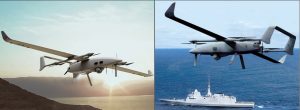
ThunderB:Source-iai.co.il
AKSHAT-HNX75 H-UAV. Akshat-HNX75 is an indigenous, Quadplane design, heavy-duty H-UAV designed and developed by VTOL Aviation India Pvt Ltd in collaboration with Indian Institute of Technology, Kanpur. The H-UAV is adapted for combat support and pinpoint logistics delivery in high altitude/difficult terrain up to an altitude of 20,000 feet, with a max take-off weight of 75 Kg. It mounts a hybrid electric-fuel powerplant and is equipped with an integrated ‘SKYCRANE’ Delivery System with digitally controlled winch mechanism. The H-UAV can also perform ISTAR missions and can be equipped with an Airborne LASER Scanning System, with a measurement range of approximately 2 Km, 75º Field of View and an accuracy of approximately 3 cm. The Electro-Optical (EO)/Infra-Red (IR) gyro-stabilized camera system allows for EO/IR imaging/recording and live video feed over 20 Km (upgradable). The H-UAV mounts a LASER Range Finder for target acquisition and can also mount SATCOM and ELINT/COMINT payloads, making it a capable platform for diverse military applications. The firm also manufactures mini/lightweight VTOL UAVs, as well as H-UAVs in the 150/300/800 Kg classes.

Akshat-HNX75:Source-vtolaviations.com
Advanced VTOL Technologies’ Hammerhead H-UAV. The Hammerhead is a product from an Australian firm, Advanced VTOL Technologies. This H-UAV incorporates tilt-rotor technology and is equipped with hybrid avionics, including 3D thrust-vectoring and conventional aero-frame control surfaces (canards)- these enable the Hammerhead to achieve greater manoeuverability in restricted areas and more efficient horizontal flight.
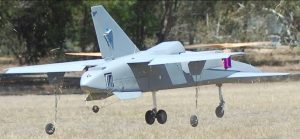
Hammerhead H-UAV:Source-avtolt.com
- TechnoSys Embedded Systems Hammerhead H-UAV. Another UAV with a similar moniker as above, the indigenous Hammerhead H-UAV has been developed in electric and fuel-powered versions. This H-UAV is equipped with a tail-mounted tilt-rotor and falls into the mini (tactical) class of UAVs, with a max take-off weight of 8.5 Kg (with battery payload) and a 1.5 Kg payload capacity. The airframe is a full composite carbon fibre honeycomb structure, thus enhancing durability and reducing dead-weight. The H-UAV has an endurance of 2.5 hours and a cruising speed of 75 Kmph and can be configured for surveillance and mapping missions.

Hammerhead Tactical H-UAV:Source-technosysind.com
Conclusion
The increasing reliance on remote operations the world over necessitate that Armed Forces enhance their UAV arsenals, in terms of numbers, but more importantly in terms of capability profile to suit constricted operational spaces due to inhospitable terrain or ever-burgeoning civilian footprints. H-UAVs meet the prevalent operational imperatives under these challenges and embody the flexible remote systems that will populate future conflicts.
***********
Reference for image – Source:antarcticglaciers.org
******************
Disclaimer
The opinions expressed in this article are the author’s own and do not reflect the views of Chanakya Forum. All information provided in this article including timeliness, completeness, accuracy, suitability or validity of information referenced therein, is the sole responsibility of the author. www.chanakyaforum.com does not assume any responsibility for the same.
Chanakya Forum is now on . Click here to join our channel (@ChanakyaForum) and stay updated with the latest headlines and articles.
Important
We work round the clock to bring you the finest articles and updates from around the world. There is a team that works tirelessly to ensure that you have a seamless reading experience. But all this costs money. Please support us so that we keep doing what we do best. Happy Reading
Support Us







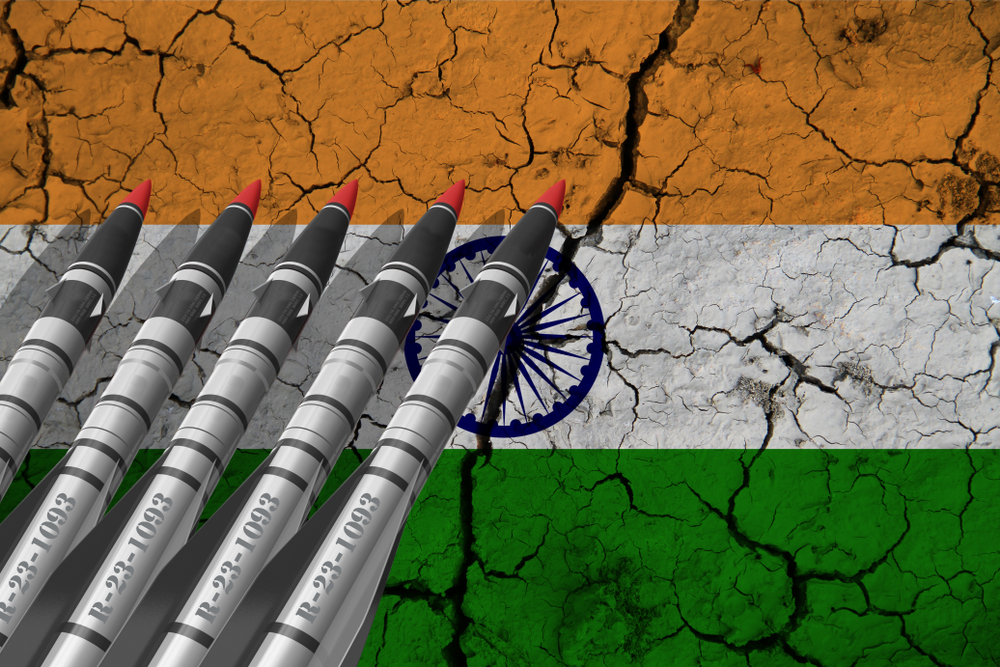

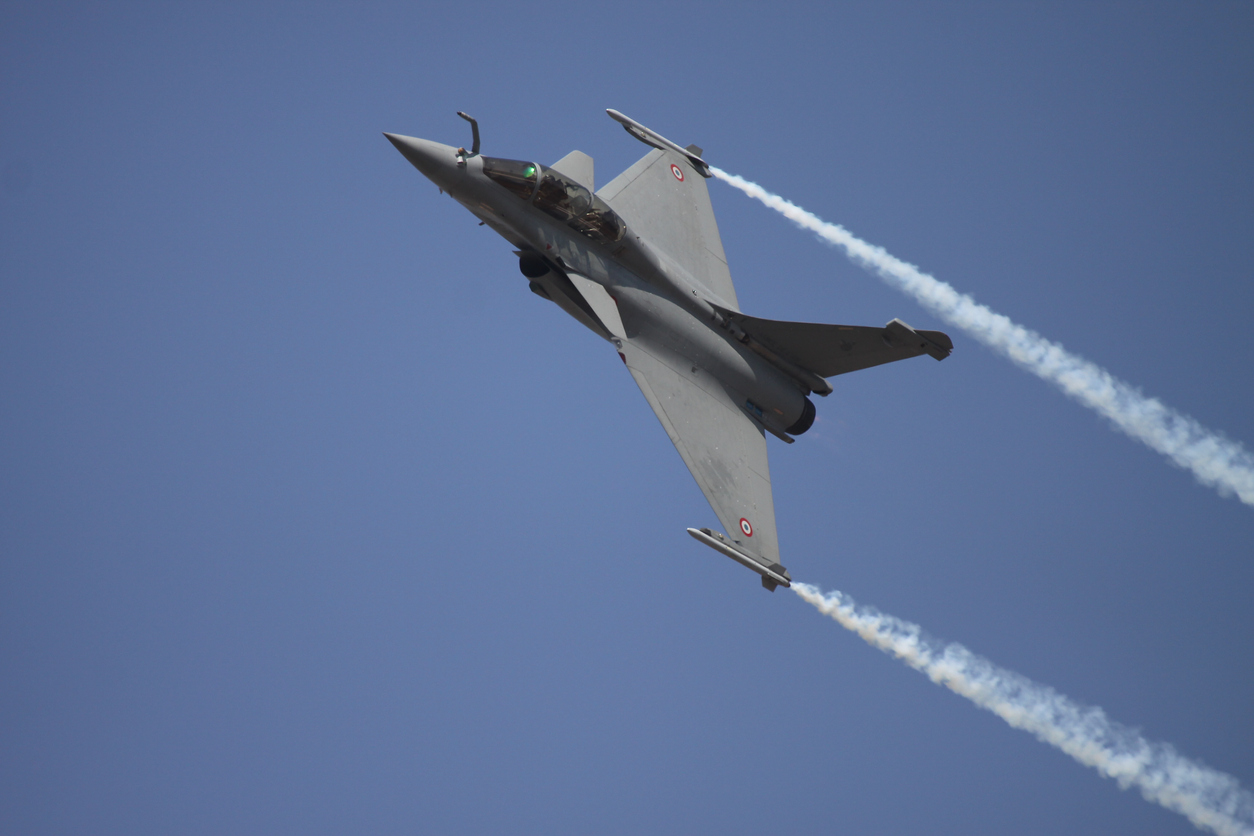
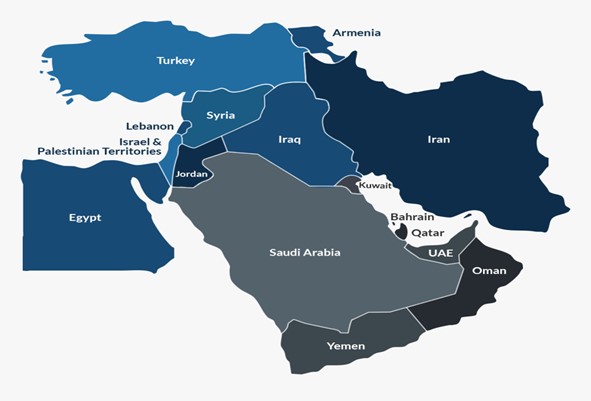


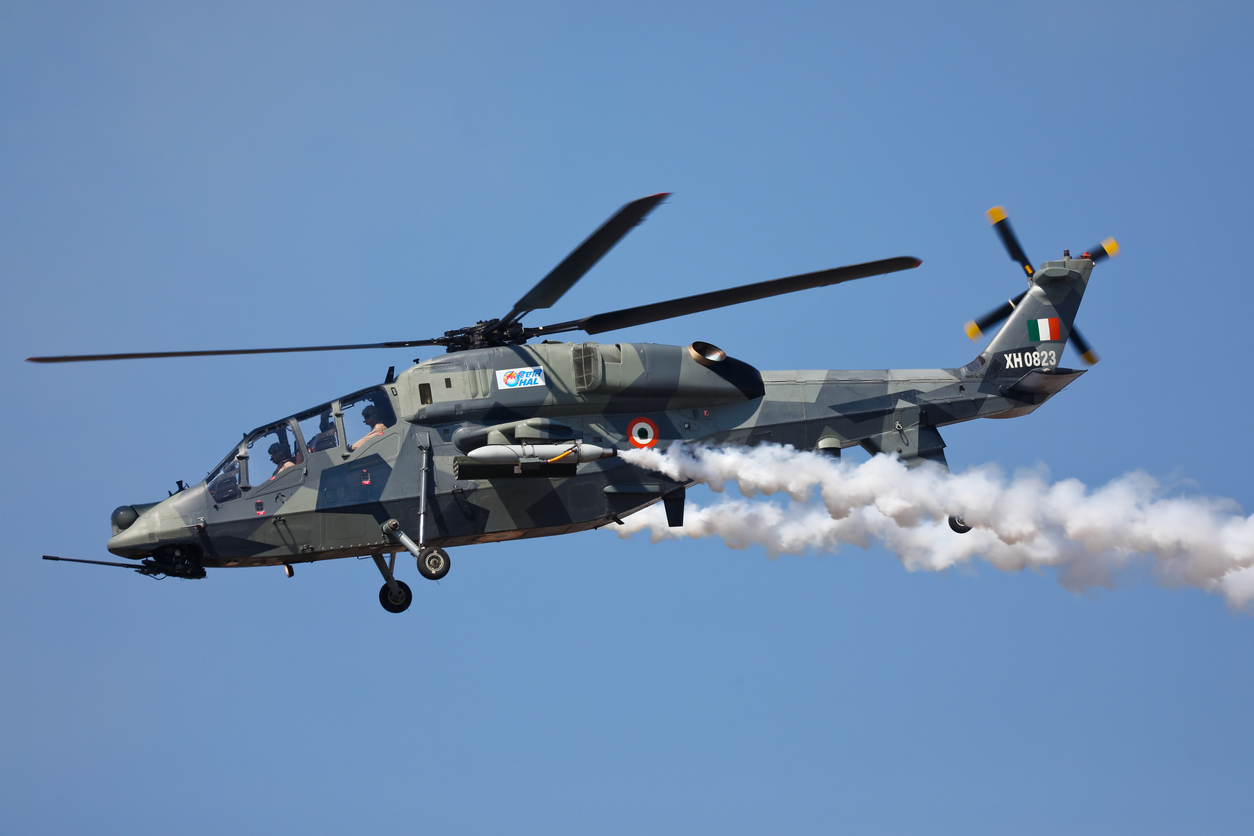
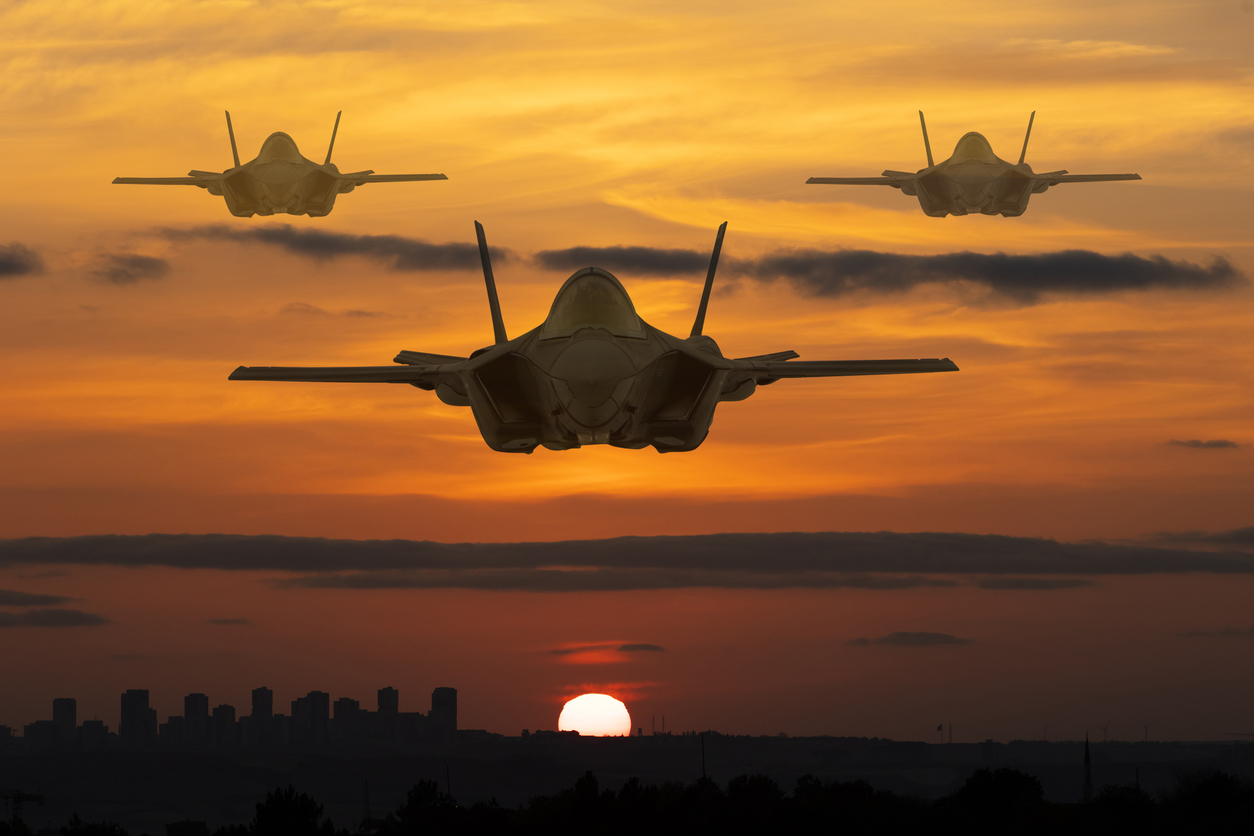






POST COMMENTS (0)